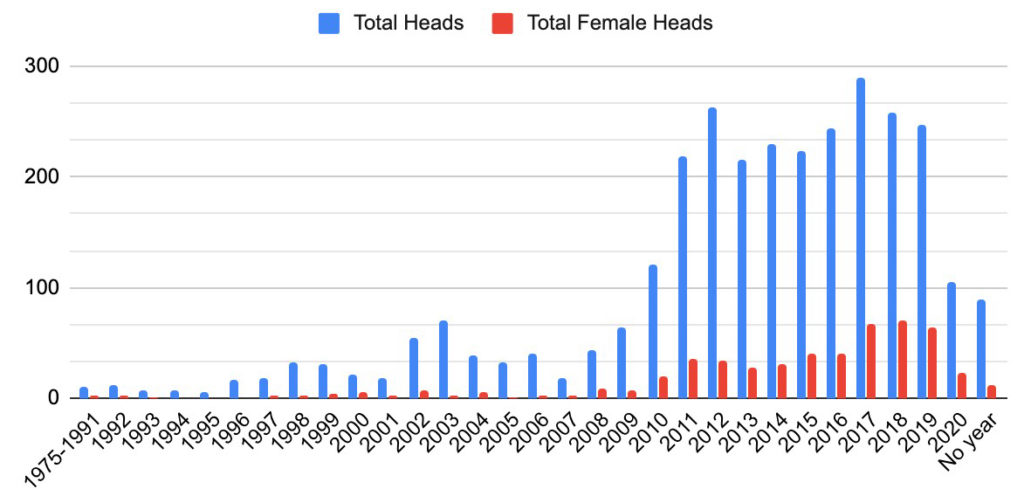
LEGO was originally a boys’ toy, and this basis is still reflected in their products. The LEGO Group has attempted to reach a more diverse audience, but female minifigures and minifigures that depict people of color are still vastly underrepresented.
Diversity in LEGO Minifigures
LEGO may be the most popular building toy of our time. This extremely versatile interlocking brick system was introduced in 1949 in Denmark, and has since taken the world by storm. Because it was a construction toy, a typically male-dominated field, LEGO products were originally targeted towards boys, and specifically white boys. As the years have gone on, The LEGO Group has since attempted to diversify its targeted clientele, as exemplified by their introduction of the LEGO Friends line in 2012 which was intended for girls, and their adult collector series (Creator Expert and its variations) aimed at AFOLs (Adult Fans of LEGO).
Despite these attempts at diversification, LEGO has a long way to go before we see true gender and racial diversity in LEGO products, from the way themes are represented to the diversity in the actual minifigures themselves. For example, the LEGO Friends line drew a lot of controversy at its launch for buying into gender stereotypes, such as those that assume girls are interested exclusively in shopping, beauty products, hanging out and pink/purple color schemes.
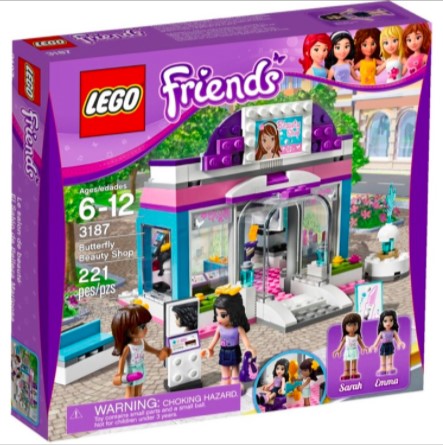
However, our focus today is on the minifigures themselves. We’re taking a deep dive specifically into the female minifigure heads produced by LEGO, analyzing the data in a number of different ways to take a closer look at how women are portrayed as LEGO minifigures.
The Data
We collected minifigure head data from Bricklink on May 30th, 2020 (so our analysis does not include June 2020 releases) and in solid colors only – no translucent, pearl, metallic, etc. shades. The chart below shows the total number of heads vs. total number of female heads released each year since 1978, when the first minifigure was produced, until May 30th, 2020.
Even as the number of minifigure heads released annually spiked in 2011 to over 200 per year, female heads lagged behind at around 30 per year. The greatest number of female heads released in one year was 70 in 2018, a mere 27% of the total 258 heads released that year.
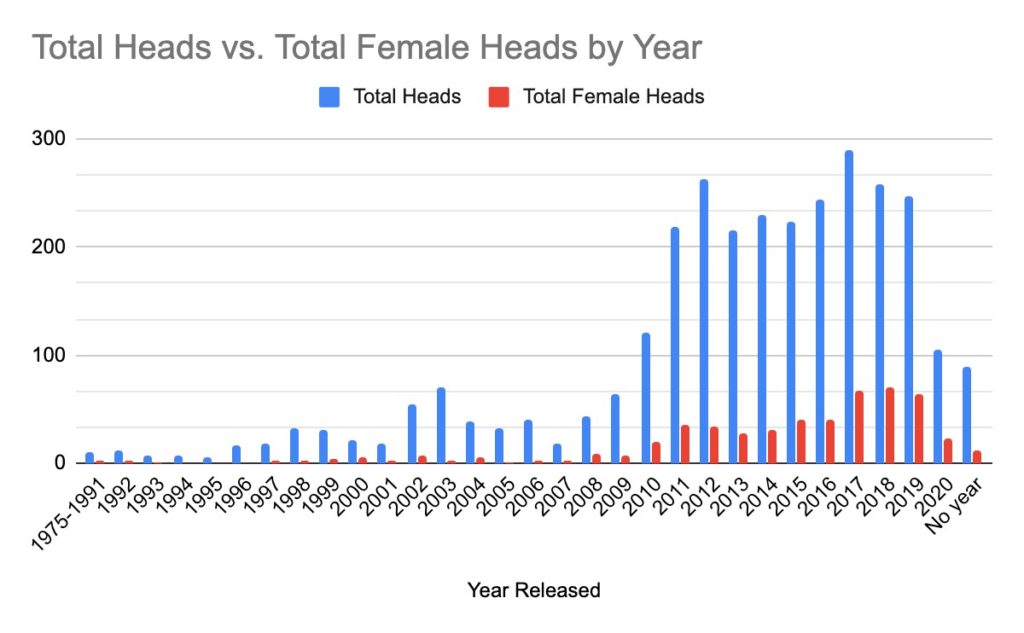
We went through every solid-colored female head on Bricklink (525 of them) and broke them down by color. The results of our analysis are shown in the following charts.
Color Breakdown
In the following two charts, it is clear that yellow and light nougat-colored heads are the overwhelming majority in female minifigure heads. In both single and dual head categories, yellow and light nougat make up more than 75% of the color palette for female heads. Because yellow is synonymous with white skin (and in the few cases where it’s not, it is used to perpetuate harmful racial stereotypes), this means that about 78% of female heads depict white females.
Many of the other colors such as blue, green, pink, etc. depict space alien or anthropomorphic creature skin tones, and do not readily reflect the diverse range of human skin tones present in our communities. Thus, the actual percentage of human skin tones on female heads that represent people of color is extremely low at about 7%. On the other hand, non human colors such as blue and green make up around 10%, meaning that there are actually more non-human colored heads than those depicting people of color.
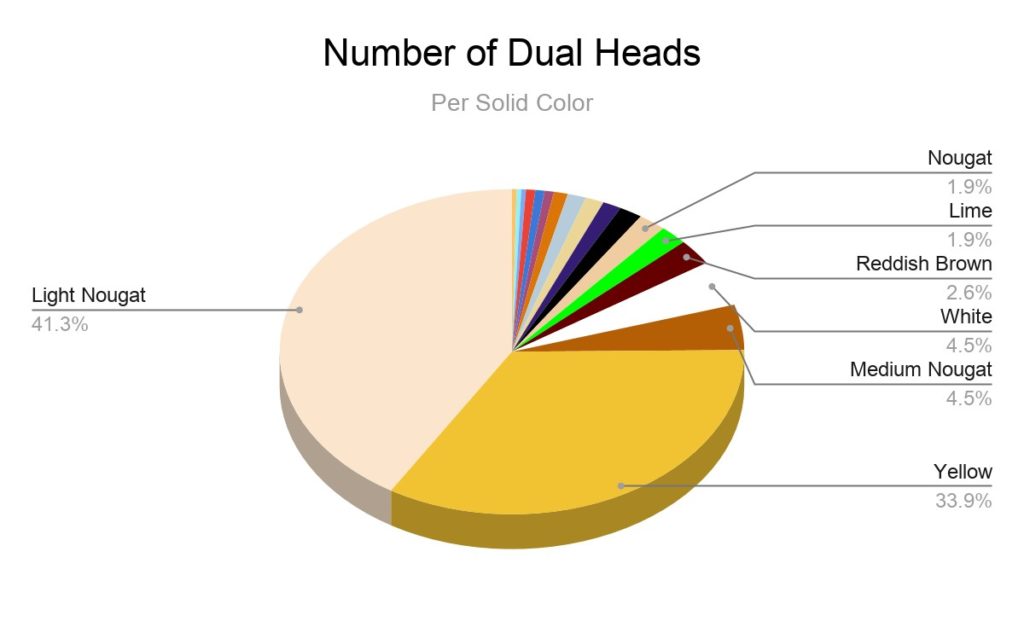
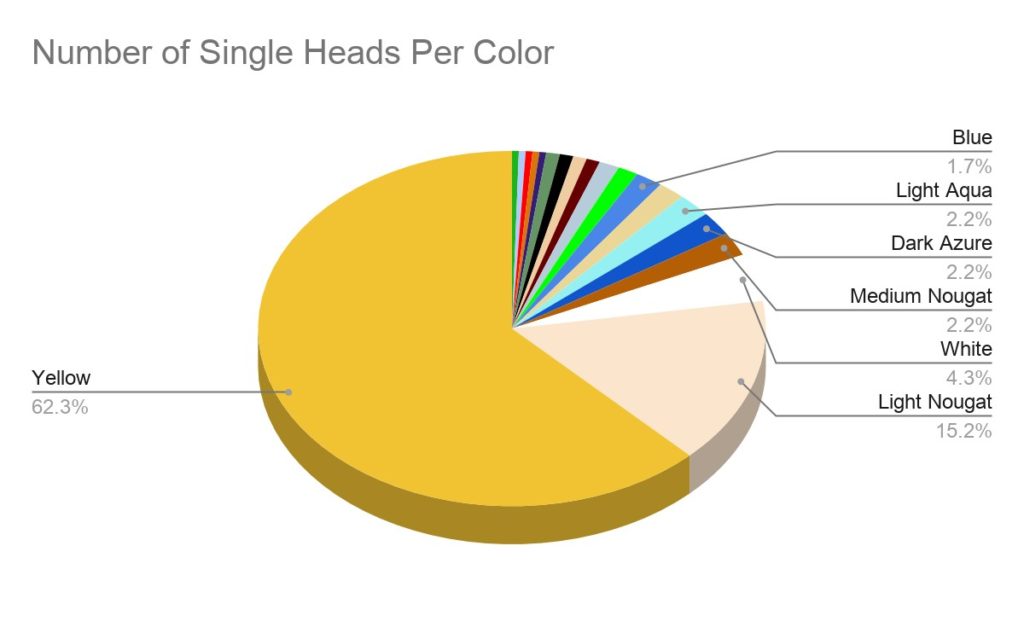
Case study: reddish brown heads
Out of over 3000 minifigure heads cataloged by Bricklink representing all the heads LEGO has ever released, only ten are female heads in the reddish brown shade used to represent Black and dark-skinned people. Of these ten, more than half have angry expressions (see figure below). With such a small selection of reddish brown female heads, limited to mostly aggressive expressions, it is clear that diversity needs to be improved in LEGO minifigures.

Conclusions
Through our analysis, we have learned a lot about how women and women of color are represented as LEGO minifigures. Here are two key takeaways from our analysis:
- There is a huge gap between the number of female and male heads made. The percentage of female heads made per year is less than around 30% of total heads.
- Only 7% of female heads made are in reddish brown, medium nougat, tan, and other skin tones that represent people of color. Meanwhile, 78% of female heads are made in yellow and light nougat, which represent white people, and 10% of female heads are in non-human skin colors.
With these issues in mind, we have a few recommendations for LEGO to make their minifigure populations more reflective of our real-world communities.
- Aim for a 50/50 distribution of male and female heads, and introduce more gender-neutral faces.
- Phase out yellow as the neutral minifigure skin color and replace it with a diverse range of skin colors that is more representative of the true makeup of the world population.
LEGO still has a lot of work to do before we come close to having a truly representative selection of minifigures that reflect the true world population. Our analysis has been eye-opening and has helped pinpoint where changes need to be made to make the LEGO community as diverse as our own.
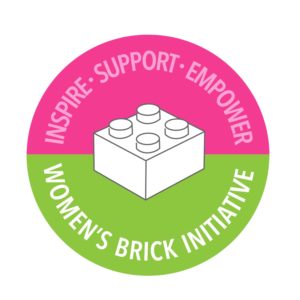
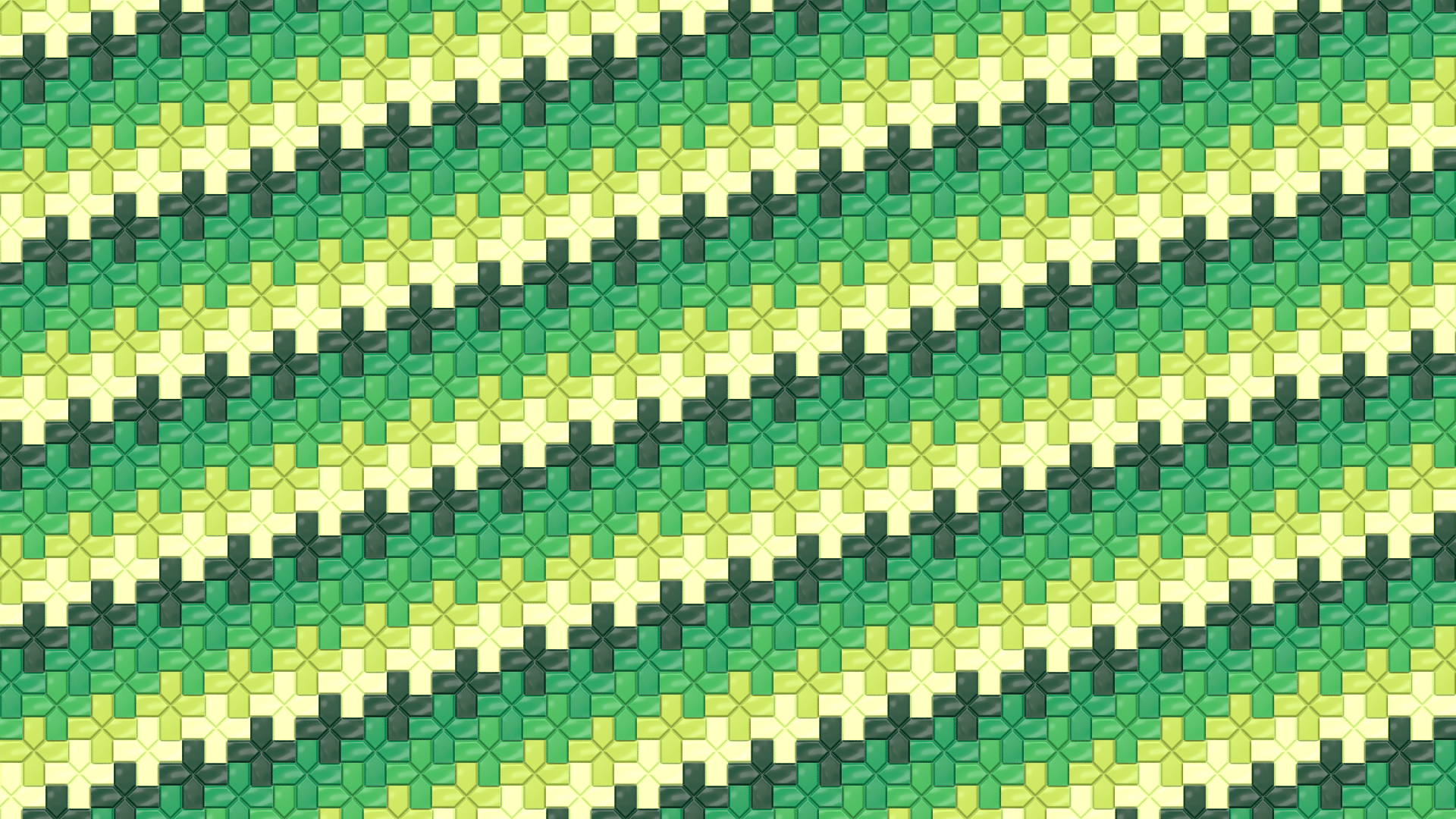
4 comments
Peter Ellis
In point 1 you said Lego should introduce more gender neutral faces. However you did not measure how many gender neutral faces they currently have. You are assuming all non-female presenting faces are male presenting. I agreed that there needs to be more diversity of minifig faces, but if you are asking for more gender neutral faces you need to measure that first.
WK
It’s a difficult proposition. On one hand, one can argue that the yellow heads are “race-neutral” and to some extent they might have been meant that way. For the old minifig heads, it is almost undeniable that they were indeed means as race-neutral with their two black dot eyes and black arch smile, but the truth is that the current minifigs are far more detailed with iconic facial expressions that we have all come to love – and with such detail tends to come a certain inevitable bias to design what you are familiar with or what appeals to the largest market group (hence Lego Group’s efforts to design more sets that are inspired by Chinese culture).
That being said, the yellow minifig head is unequivocally associated with Lego, so there’s no way those can be replaced.
That being said, the world is becoming ‘smaller’, people from all over the planet can connect instantaneously with each other and we are all becoming more aware that there are other shapes, types, sizes and colours that are just as “okay” as our own.
However, the only way that we can begin to understand our neighbours and recognize ourselves through the most natural form of learning – play – is by finding representation in the tools we use to play.
So I for one applaud Lego’s efforts to diversify their minifig spectrum but, as this article very clearly shows, there is plenty of room for improvement to increase the presence of current “minority” colours and showing the world that Lego’s depiction of the future is as bright and colourful as the rest of their bricks!
Barbara J. Price-Mills
I thought the yellow heads were a non race…that they stood for any race. I only buy yellow heads for that reason. I like that they can be black or Asian or white.
jen doof
faces of Yellow, should not be phased out..